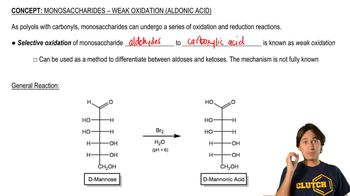Multiple Choice
Which of the following compounds can a plant not synthesize from glucose through oxidative cleavage?
 Verified step by step guidance
Verified step by step guidance Verified video answer for a similar problem:
Verified video answer for a similar problem:



 6:41m
6:41mMaster Monosaccharides - Oxidative Cleavage with a bite sized video explanation from Johnny
Start learning